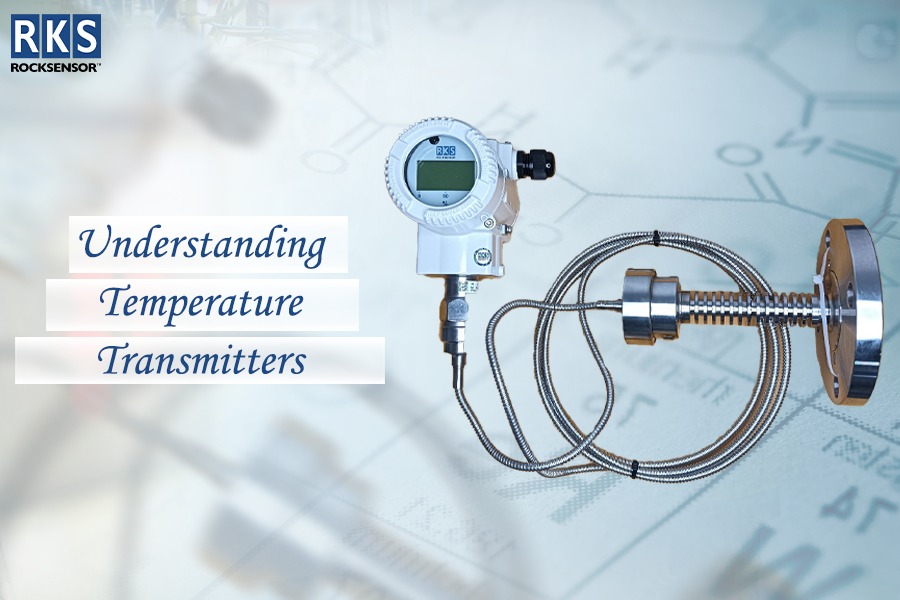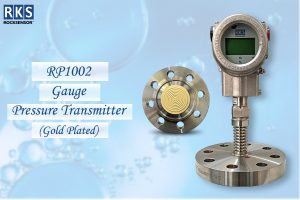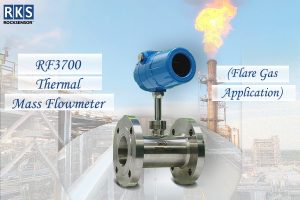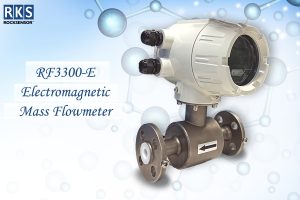Temperature measurement is critical in many industrial applications, and choosing the right temperature transmitter is essential for reliable performance. This blog delves into common issues encountered when temperature transmitters do not provide accurate readings and highlights key considerations in sensor selection, wiring configurations, and transmitter types.
The Importance of Sensor Selection
When dealing with high-temperature applications, such as measuring around 800 degrees Celsius, the choice of temperature sensor is paramount. Resistance Temperature Detectors (RTDs) are known for their accuracy and stability but generally operate effectively in lower temperature ranges (typically up to about 600 degrees Celsius). For measurement requirements beyond this threshold, Thermocouples are recommended due to their ability to withstand higher temperatures.
Thermocouples
Thermocouples are temperature sensors that consist of two dissimilar metal wires joined at one end. When the junction of these two metals experiences a temperature difference, a voltage (known as the Seebeck Effect) is generated, which can be measured and related to temperature.
Key Features of Thermocouples:
- Wide Temperature Range: Thermocouples can operate over a much broader temperature span compared to RTDs, making them suitable for extreme temperature applications.
- Fast Response Time: Due to their construction, thermocouples can respond quickly to temperature changes.
- Durability: Generally robust and can withstand harsh environments.
Common Types of Thermocouples and Their Ranges:
Type K (Chromel-Alumel):
-
- Temperature Range: -200 °C to 1260 °C.
- Use: General-purpose applications due to its wide range and good accuracy.
Type J (Iron-Constantan):
-
- Temperature Range: -40 °C to 750 °C.
- Use: Often used in vacuum applications and is more susceptible to oxidation at high temperatures.
Type T (Copper-Constantan):
-
- Temperature Range: -200 °C to 350 °C.
- Use: Best suited for cryogenic applications and food processing, excellent for low-temperature measurements.
Type E (Chromel-Constantan):
-
- Temperature Range: -200 °C to 900 °C.
- Use: Known for its high output and good accuracy, frequently used for cryogenic measurements.
Type N (Nicrosil-Nisil):
-
- Temperature Range: -200 °C to 1300 °C.
- Use: Offers better stability and resistance to high temperatures, often used in industrial applications.
Type S (Platinum-Rhodium):
-
- Temperature Range: 0 °C to 1480 °C.
- Use: Commonly employed in high-temperature applications, including laboratory environments and high-quality manufacturing.
Type R (Platinum-Rhodium):
-
- Temperature Range: 0 °C to 1600 °C.
- Use: Similar to Type S but with a higher temperature range; used in critical applications requiring high accuracy in extreme conditions.
Type B (Platinum-Rhodium):
-
- Temperature Range: 0 °C to 1700 °C.
- Use: Extremely accurate for high-temperature measurements and is often used in industrial applications and for high-temperature processes.
Resistance Temperature Detectors (RTDs)
RTDs are temperature sensors that measure temperature based on the resistance of a metal, typically platinum. As the temperature increases, the resistance of the metal increases in a predictable manner, allowing for accurate temperature measurement.
Key Features of RTDs:
- Accuracy: RTDs are known for their high accuracy and stability, particularly in low to moderate temperature ranges.
- Linearity: The resistance change is relatively linear with temperature, making calibration straightforward.
- Durability: Typically more rugged than thermocouples when appropriately housed.
How PT100 RTDs Work:
- The term “PT100” refers to a specific type of RTD that has a resistance of 100 ohms at 0 degrees Celsius (0 °C).
- Positive Temperature Coefficient: The resistance of a PT100 sensor increases with temperature. This means that as temperature rises, the resistance of the RTD also rises predictably.
- Resistance Changes: For example, at different standard temperature points, the resistance values of a PT100 RTD can be summarized as follows: For reference, the temperature coefficient of resistance for platinum is approximately 0.00385 ohms/ohm/°C. This means that for every degree Celsius increase in temperature, the resistance increases by about 0.385% of the initial value at 0 °C.
Common Types of RTDs:
- PT100: The most common RTD type with a resistance of 100 ohms at 0 °C. It is effective in a temperature range of approximately -200 °C to 850 °C.
- PT1000: Similar to PT100 but with a resistance of 1000 ohms at 0 °C. It is used mainly in applications requiring less current draw and has a similar temperature range as the PT100.
- Copper RTDs: These RTDs are less common and typically used in lower temperature applications, generally ranging from -200 °C to 150 °C.
Using an RTD in high-temperature applications will likely lead to inaccurate readings or transmitter failure, as RTDs are not designed to measure such extreme temperatures.
Wiring Configurations
The wiring configuration of temperature sensors plays a vital role in the accuracy of temperature transmission. The most common configurations are 2-wire, 3-wire, and 4-wire:
- 2-Wire Configuration: This is the simplest and most cost-effective option but is prone to errors due to lead resistance, particularly over long distances. This configuration may not be ideal for accurate temperature readings where precision is crucial.
- 3-Wire Configuration: This setup improves accuracy by compensating for the lead resistance of one of the wires, making it suitable for moderate distances and providing better reliability than a 2-wire arrangement.
- 4-Wire Configuration: This is the most accurate configuration for RTDs, as it eliminates the effects of wire resistance entirely, making it ideal for applications requiring high precision.
When choosing an appropriate configuration, consider factors such as installation distance and environmental conditions that may affect wiring performance.
Calibration of Transmitters
Calibration of temperature transmitters is a fundamental step that must be aligned with the selected sensor type and configuration to ensure accurate readings. For instance:
- If you are using a PT100 sensor, the transmitter should be configured specifically for PT100 input to interpret the resistance accurately.
- Similarly, if a 2-wire configuration is employed, the transmitter needs to be set accordingly to account for the lead resistance that could affect the measurement.
Correct calibration according to the specific sensor settings is essential so that the transmitter can provide reliable and accurate temperature readings.
Transmitter Options from Rocksensor
Rocksensor offers a range of temperature transmitters suitable for diverse applications.
key models:
- Field Mount Temperature Transmitter (RTT5000)
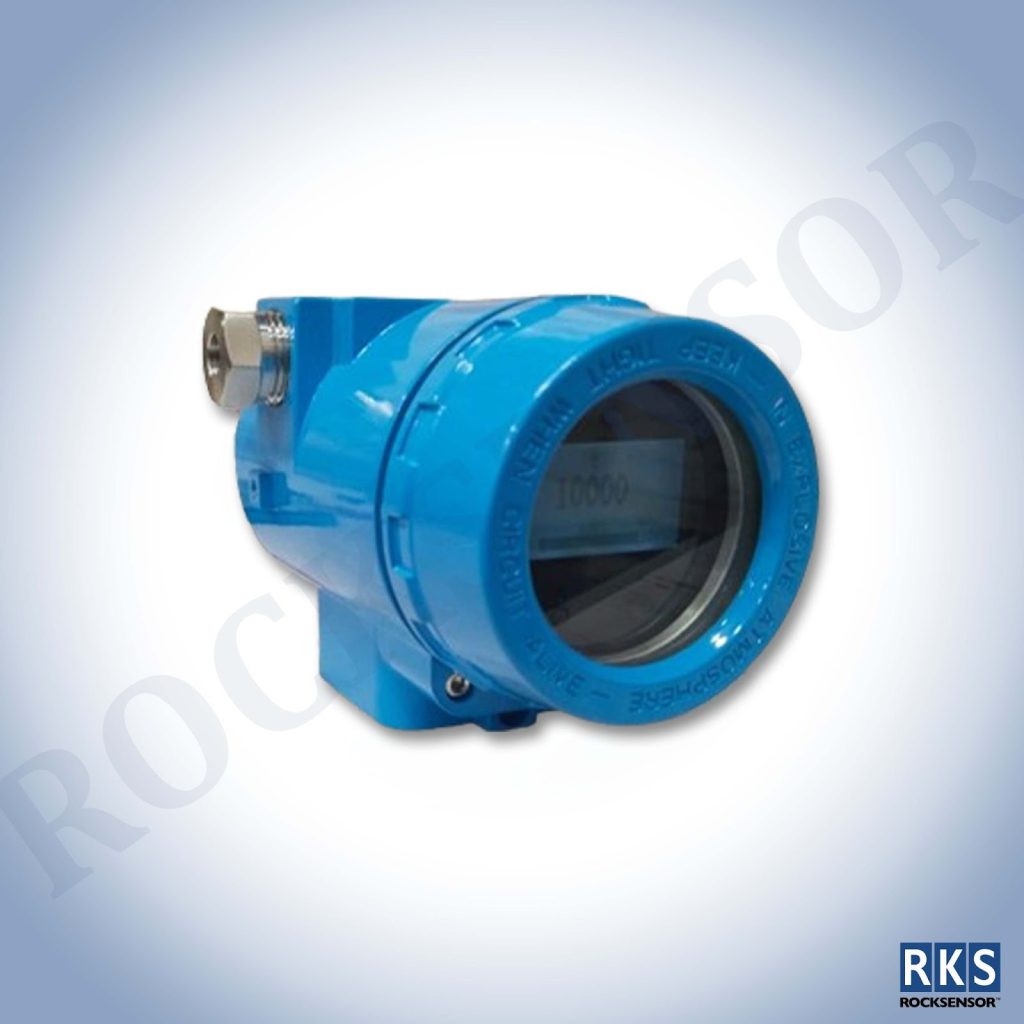
The Field Mount temperature transmitter processes the on-site thermal resistance or thermocouple signal through isolation and amplification, converts it into a DC signal linear with temperature and outputs it to the control system.
The parameters can be modified with the supporting host computer software, and can be used with unit combination instruments and DCS, PLC.
Features:-
Universal Input (Thermocouple/ RTD)
Accuracy ±0.1%
ATEX
IP Protection 65
Working Temperature: Upto 85°C
- Temperature Transmitter for Sanitary Applications (RT2004 RTD)
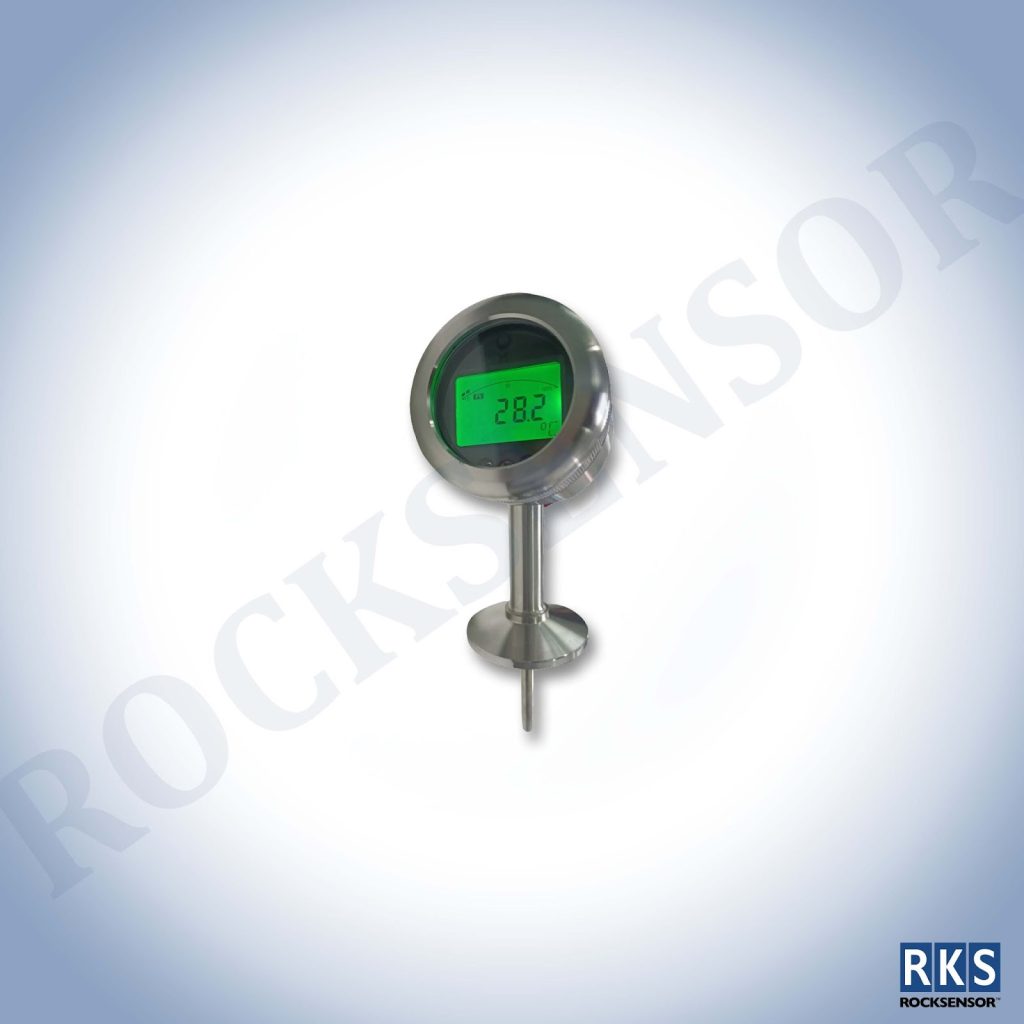
It is widely used into temperature measurement of liquid, gas or steam at nodes such as pipelines and tanks in sanitary industries such as food and pharmaceuticals.
Features:-
RTD temperature transmitter
Working temperature: +200°C
In-built RTD Probe
Sanitary Connection
- DIN Rail Temperature Transmitter (RTM5001)
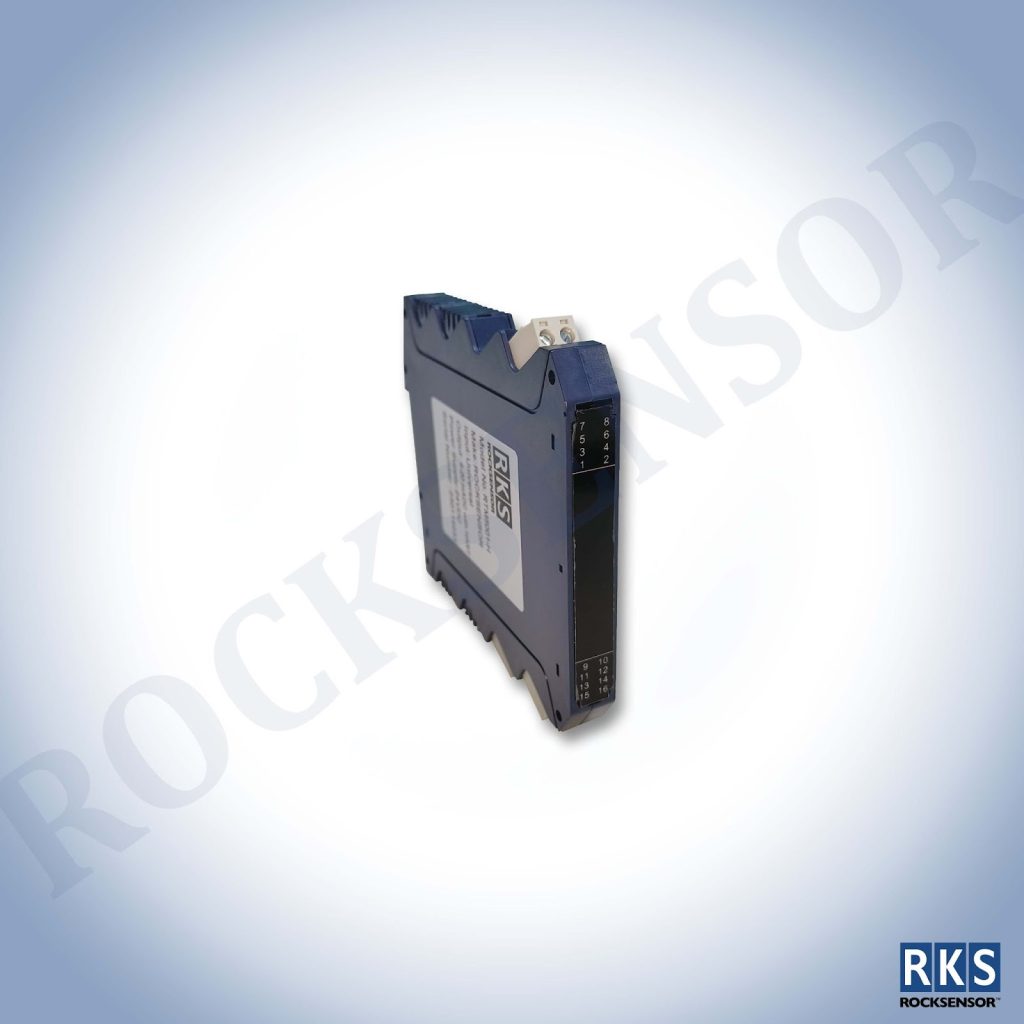
It is widely used in temperature measurement of liquid, gas or steam at nodes such as pipelines and tanks in sanitary industries such as food and pharmaceuticals.
Features:-
RTD temperature transmitter
Working temperature: +150°C
In-built RTD Probe
Sanitary Connection
- Head Mount Temperature Transmitter (RTM5000)
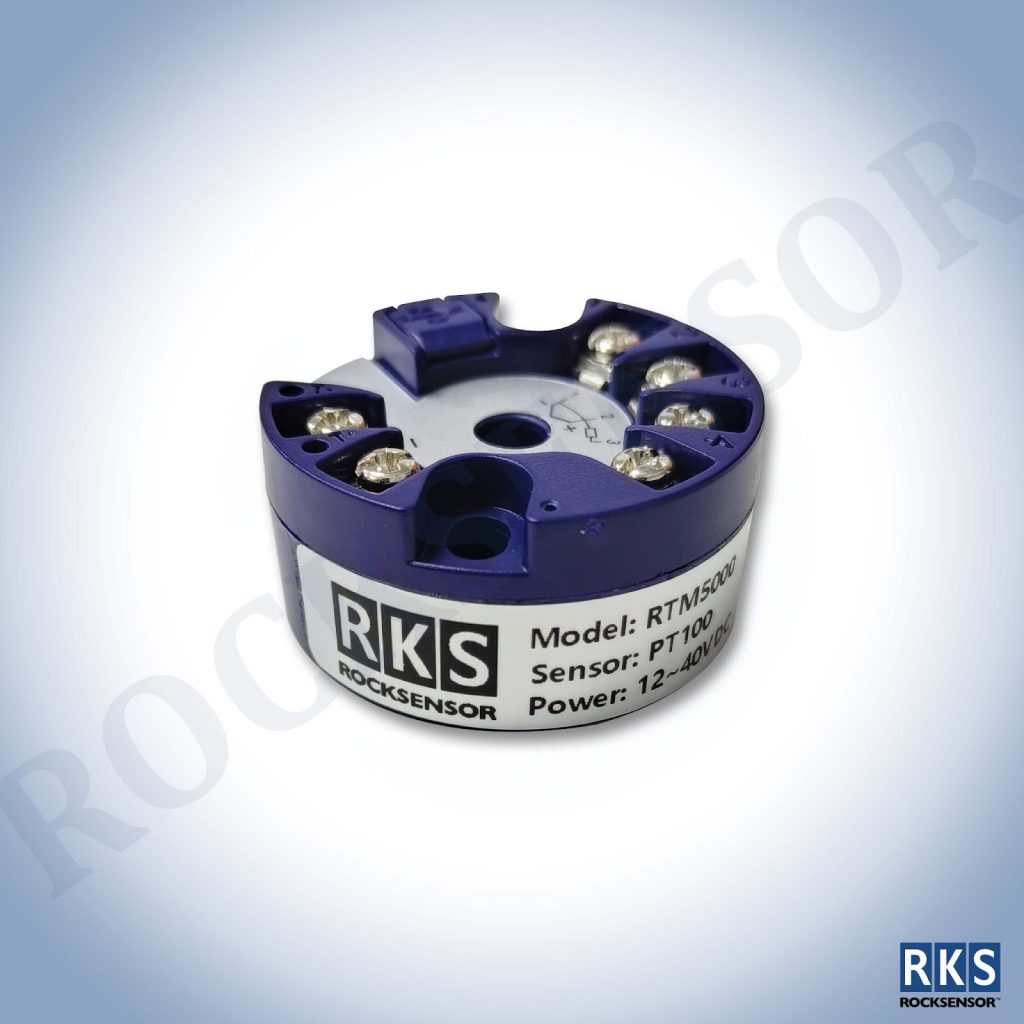
Suitable to transmit on-site Thermal Resistance or Thermocouple Signals for Temperature Measurement.
Features:-
DIN Rail Mount type Temperature Transmitter
Universal Inputs
Working Temperature: Up to 60° C
Factors Influencing Temperature Accuracy
In addition to sensor types and wiring configurations, several other factors can influence the accuracy of temperature readings:
- Calibration: Regular calibration of both the sensors and transmitters is critical to maintaining accuracy over time. As previously mentioned, ensuring that the transmitter settings match the connected sensor type and wiring configuration is vital for reliable performance.
- Environmental Conditions: Factors like electromagnetic interference, temperature fluctuations, and physical obstructions can impact readings.
- Installation Practices: Proper installation practices, including ensuring secure connections and correct placement of sensors in the media being measured, are essential for optimal performance.
Choosing the right temperature transmitter and sensor is a critical step in ensuring accurate and reliable temperature measurement, particularly in high-temperature environments.
By understanding the limitations of RTDs and selecting appropriate thermocouples for extreme temperatures, along with considering wiring configurations and the calibration of transmitters as per the sensor setup, users can mitigate the common issues of inaccurate readings.
Regular maintenance, calibration, and mindful installation practices will further enhance the reliability of temperature transmitters. Whether you’re Utilising the RTT5000 for field operations, the RT2004 for sanitary needs, or the compact RTM5001 for DIN rail applications, selecting the right setup tailored to your specific environment is crucial for achieving optimal performance.
#TemperatureTransmitter #Rocksensor #TemperatureMeasurement #IndustrialSensors #TemperatureControl #ProcessAutomation #IndustrialEquipment #TemperatureMonitoring #RockSensorTechnology #SensorSolutions #ProcessControl #TemperatureSensor #AutomationTechnology #IndustrialInstrumentation #RealTimeMonitoring #TemperatureData #PrecisionMeasurement #SensorTechnology #SmartSensors #EnergyEfficiency

